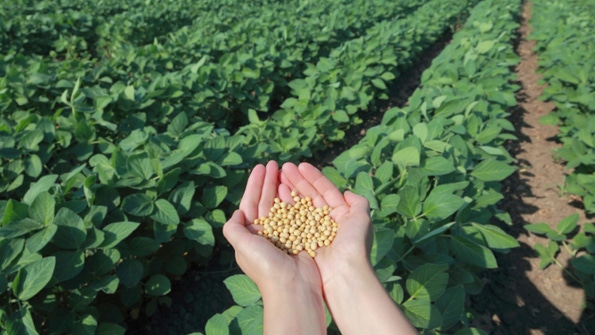
The highly anticipated June 30th USDA Acreage report was released this morning and it provided ample price support to a market needing good news.
For a while now we had been hearing that acres were going to be revised higher, especially in corn. Some estimates looked to add nearly 5 million more acres on top of the March planting intentions of 91.1 million acres. That didn’t happen.
We had been scratching our heads trying to figure out where all these acres were going to come from. Logic would point to many of the fringe areas, especially in the Dakotas. Even if that came true, those areas are usually at higher weather risk and struggle to produce trendline yields.
This is turning out to be one of those years, as USDA pegged actual planted acres today at 92.7 million, up just 1.6 million – and far below trade expectations. The market most likely had 2.6 million acres built into it as that is what the average trade guess was looking for.
With 1 million acres below the average trade guess, that sent the market up the limit as I write this.
Soybean acres also lower
Soybeans followed in step in that they too came in below what the trade was expecting. The market had been conditioned to believe for some time now that there could be another 1 to 2 million more acres than the March planting intentions report indicated. The market was looking for at least 1.4 million more acres and it didn’t happen, as USDA left soybean acres unchanged.
Technically, the agency reduced them by 45,000 acres. We would not have been surprised had they reduced them more than that considering all the chatter about more corn acres. This news sent soybean prices sharply higher.
Quarterly stocks did not disappoint us either. The average trade guess was looking for 4.1 billion bushels and the USDA came in right on target. Soybeans came in slightly below the average trade guess at 767 million bushels. Wheat also came in at 845 million bushel, about 14 million bushel below the average trade guess.
Extended bull market
Overall today’s report continues to work in our favor as far as extending the bull market for the mid-term. Now that we know what planted acres are, we need to take a closer look at harvested acres. Flooding in parts of the Delta and dry weather in the Dakotas could lead to a reduction in harvested acres.
Focus will turn back to weather now as well. The markets reacted accordingly the last couple of weeks as rainfall brought relief to many areas in the Corn Belt; however, many parts of Iowa, Minnesota and the Dakotas continue to operate hand to mouth as subsoil moisture has been depleted. As much as 40% of the Corn Belt is still within a drought area. These are regions that may have a good crop at the moment but are operating at a very high risk.
I only got one inch of rain on my farm in Iowa in the whole month of June. While the crops may have gotten by, that will not cut it in July and August as the demand for water will grow.
I have said it before: one-inch rains will not be enough. The market has not given this much attention until now, but I expect it will eventually be forced to take this into consideration. Unfortunately, the summer forecast does not look for much to change. Wet areas will keep attracting most of the moisture. Hopefully the dry areas can catch some of that.
The market theme continues to be that even with trendline yields, ending stocks don’t change much for next season. This will continue to prop up prices.
The acreage report was a major risk to that theme, as more acres could have offset lower production. That risk is now behind us.
Matthew Kruse is President of Commstock Investments. He can be reached at [email protected].
Futures trading involves risk. The risk of loss in trading futures and/or options is substantial and each investor and/or trader must consider whether this is a suitable investment. Past performance is not indicative of future results. Trading advice is based on information taken from trades and statistical services and other sources that CommStock Investments believes to be reliable. We do not guarantee that such information is accurate or complete and it should not be relied upon as such. Trading advice reflects our good faith judgment at a specific time and is subject to change without notice. There is no guarantee that the advice we give will result in profitable trades.
About the Author(s)
You May Also Like






